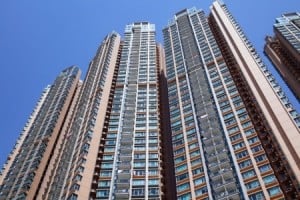Renters increasingly demanding higher-end amenities in their apartment communities

These are some of the amenities that ranked high for Minneapolis/St. Paul renters in 2015 Renter Preferences Study released recently by the National Multifamily Housing Council and Kingsley Associates. According to the study, renters today want more high-end amenities. In some ways, renters expect their apartments today to look and feel more like expensive hotels.
The ability to access the online world, though, still ranks high. According to the preferences study, 95 percent of surveyed Twin City renters were either interested or very interested in having high-speed Internet access in their apartment units. That came in second place on the survey, behind only in-unit washers and dryers.
Other top finishers? A total of 89 percent of Twin City-area renters are interested or very interested in patios or balconies, while the same percentage want walk-in closets. Soundproof walls scored a rating of interested or very interested from 87 percent of local renters, while smart thermostats interested 82 percent of renters and premium countertops nabbed the interest of 78 percent.
Renters here expect plenty of community amenities in their apartment buildings, too. A total of 82 percent of Twin City-area renters were interested or very interested in recycling services, 80 percent in on-site fitness centers, 81 percent in package delivery rooms and holding areas and 76 percent in an on-site pool. A total of 47 percent of renters were interested or very interested in bike-storage areas. That is less than 50 percent, but does rank high in terms of national averages.
Rick Haughey, a vice president with the National Multifamily Housing Council, said that Twin City-area renters are not unlike most of their peers across the country, all of whom are seeking more amenities from their apartment buildings.
There is a challenge, though. Haughey said that much of the new apartment construction taking place in urban areas like Minneapolis/St. Paul today are built for wealthier renters. These apartment buildings are offering the amenities that today’s renters want. But they are charging extremely high monthly rents for them.
Many renters who want to live in the middle of cities today, then, can’t afford the rents being charged for most urban units, Haughey said.
“There is demand for this higher-end product. But how deep is that demand? How many folks out there can afford this product?” Haughey asked. “Our surveys are saying that people want it. But how many can actually afford it? That we don’t know.”
It’s not easy for developers to build affordable apartment units in the middle of busy urban areas, Haughey said. Land is simply too expensive in urban markets, he said. It’s challenging, too, to build these higher-end apartments in suburban areas. That’s because other suburban residents often fight higher-density developments in their lower-density communities, he said.
“A lot of Millennials can’t afford these apartments today,” Haughey said. “And that’s a problem because developers have been building many of these buildings with Millennials in mind.”
Regardless of the allure of multifamily living, most renters today — including Millennials — don’t plan on remaining renters for life. In one of the more interesting results of the National Multifamily Housing Council’s survey was that 66.9 percent of Twin City-area renters said that they saw themselves owning a home in five years. Just 33.1 percent said that they saw themselves continuing to rent in five years.
Source: rejournals.com















 Accessibility
Accessibility